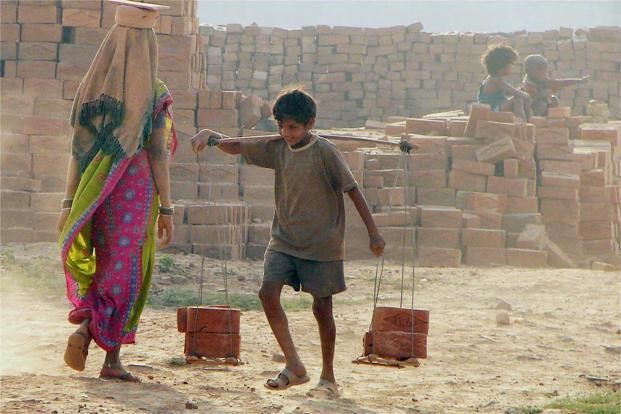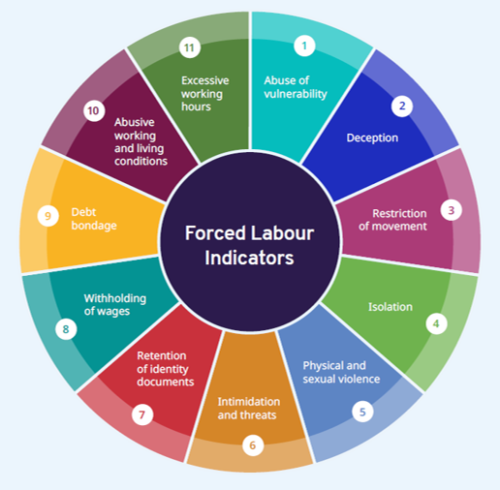Description

Disclaimer: Copyright infringement not intended.
Context
- A study by the International Labour Organization (ILO), on forced labour was released.
- The report, was titled as ‘Profits and poverty: The economics of forced labour’.
Forced Labour
- According to the ILO Forced Labour Convention, 1930 (No. 29) , forced or compulsory labour is: "all work or service which is exacted from any person under the threat of a penalty and for which the person has not offered himself or herself voluntarily."

Basis of the study: ‘Profits and poverty: The economics of forced labour’
- For the study, surveys have been conducted among workers, including Indian workers in Saudi Arabia and Qatar.
Findings of the study
- Forced labour generates illegal profits worth $36 billion per year.
- This is an increase of 37% of such illegal profits since 2014.This is fuelled by both a growth in the number of people forced into labour, as well as higher profits generated from the exploitation of victims.
- Traffickers and criminals are generating close to $10,000 per victim, up from $8,269 (adjusted for inflation) a decade ago.
- Total annual illegal profits from forced labour are highest in Europe and Central Asia ($84 billion), followed by Asia and the Pacific ($62 billion), the Americas ($52 billion), Africa ($20 billion), and the Arab States (US$18 billion).
- Forced commercial sexual exploitation accounts for more than two-thirds (73%) of the total illegal profits, despite accounting for only 27% of the total number of victims in privately imposed labour.
- After forced commercial sexual exploitation, the sector with the highest annual illegal profits from forced labour is industry, at US$35 billion, followed by services (US$20.8 billion), agriculture (US$5.0 billion), and domestic work (US$2.6 billion). These illegal profits are the wages that rightfully belong in the pockets of workers but instead remain in the hands of their exploiters, as a result of their coercive practices.
- There were 27.6 million people engaged in forced labour on any given day in 2021, the report said, meaning 3.5 people for every 1,000 people in the world.
- Between 2016 and 2021, the number of people in forced labour increased by 2.7 million.

Report Recommendations
- Forced labour perpetuates cycles of poverty and exploitation and strikes at the heart of human dignity. The international community must urgently come together to take action to end this injustice.
- The report also stresses the urgent need for investment in enforcement measures to stem illegal profit flows and hold perpetrators accountable.
- It has recommended for strengthening legal frameworks, providing training for enforcement officials extending labour inspection into high-risk sectors, and better coordination between labour and criminal law enforcement.
- Enforcement actions must be part of a comprehensive approach that prioritises addressing root causes and safeguarding victims, underlines the report.
- Promoting fair recruitment processes is also crucial, given that forced labour cases can often be traced back to recruitment abuses as well as the apparent importance of unlawful recruitment fees and costs as a source of illegal profit from forced labour.
- Ensuring the freedom of workers to associate and to bargain collectively is also essential to building resilience to the risks of forced labour.
RELATED ARTICLES:
https://www.iasgyan.in/daily-current-affairs/modern-slavery
https://www.iasgyan.in/daily-current-affairs/a-call-for-safer-and-healthier-working-environments
https://www.google.com/url?sa=i&url=https%3A%2F%2Fwww.iasgyan.in%2Fdaily-current-affairs%2Fworld-day-against-child-labour&psig=AOvVaw01YbYZXj97SavSW1l06slN&ust=1711006513319000&source=images&cd=vfe&opi=89978449&ved=2ahUKEwi22N-MqoKFAxVeTGwGHeegC4UQr4kDegQIARA3
ILO: https://www.iasgyan.in/daily-current-affairs/ilo
|
PRACTICE QUESTION
Q. Analyse the socio-economic impacts of forced labour, assessing the effectiveness of current legal frameworks and international collaboration in addressing this issue. Propose strategies to strengthen global initiatives aimed at eradicating forced labour and safeguarding human rights.
|














